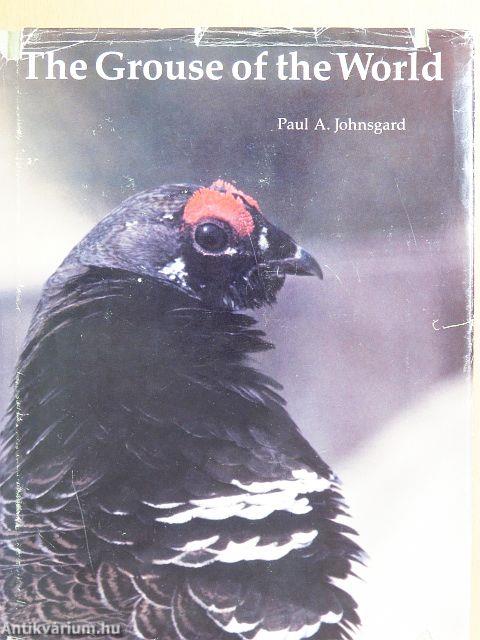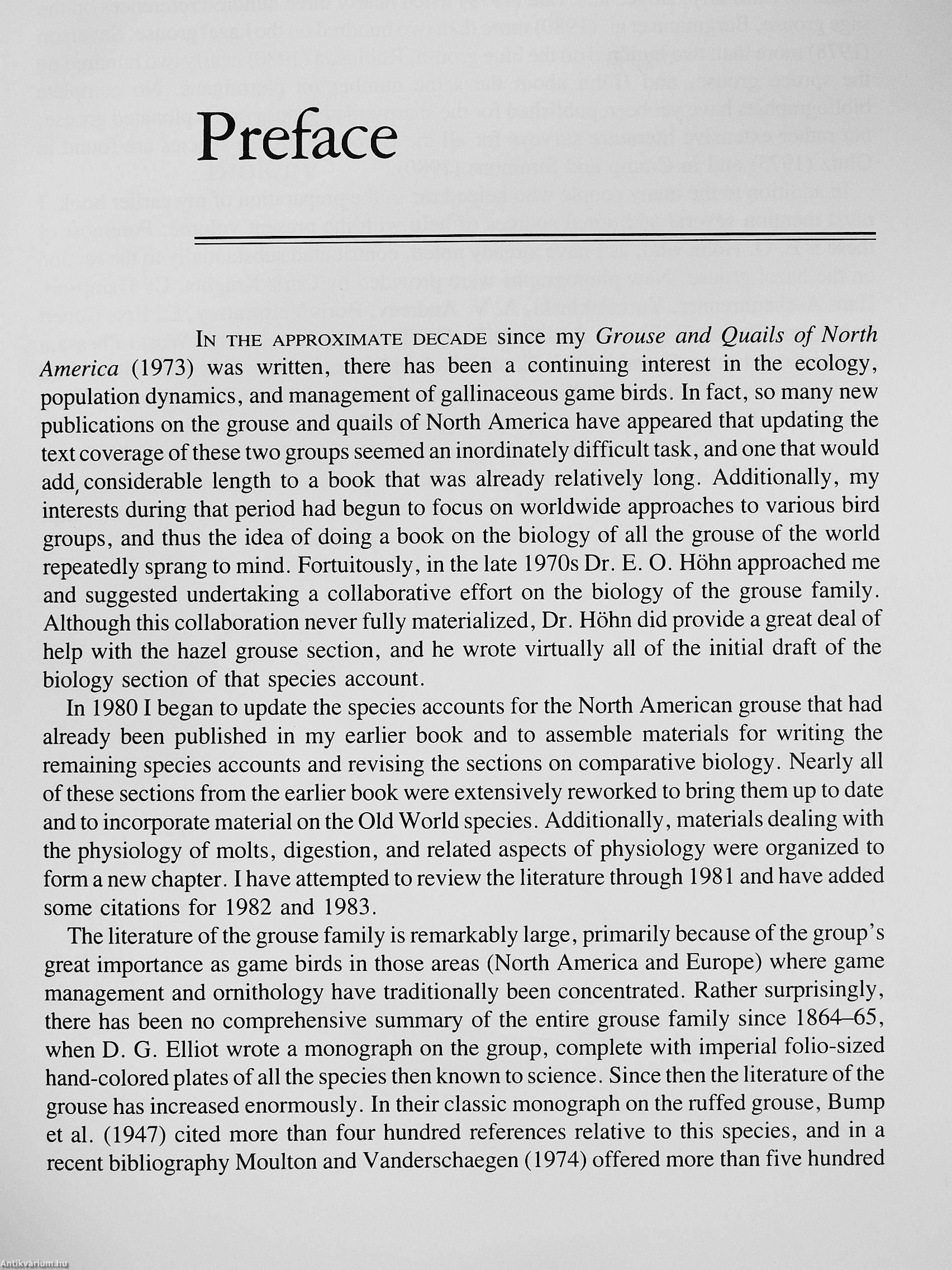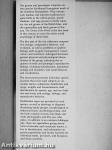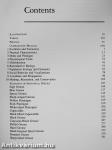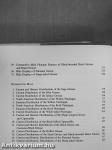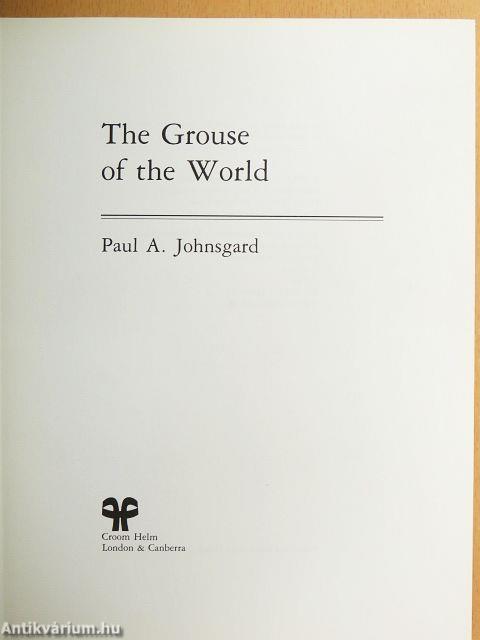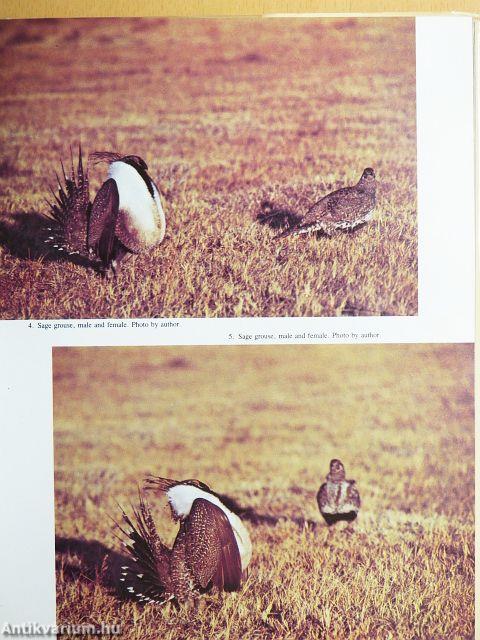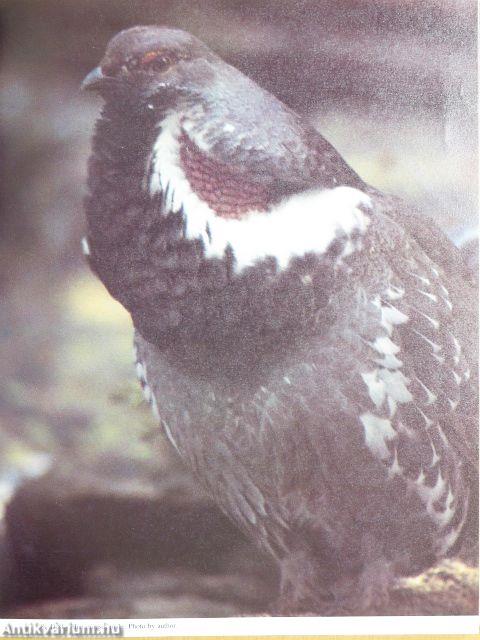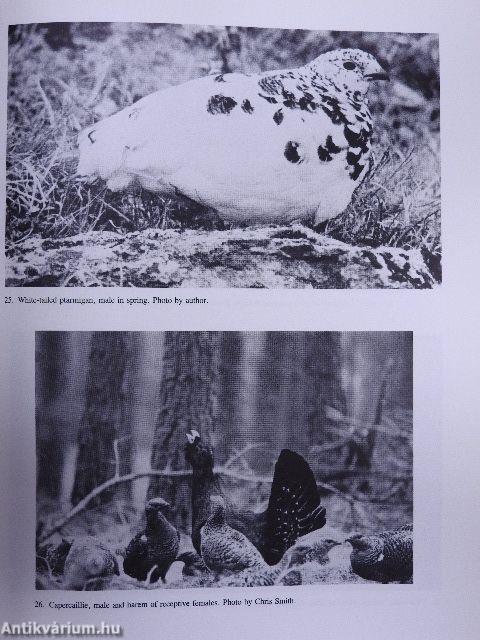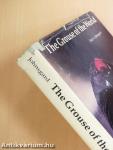1.062.389
kiadvánnyal nyújtjuk Magyarország legnagyobb antikvár könyv-kínálatát

VISSZA
A TETEJÉRE
JAVASLATOKÉszre-
vételek
The Grouse of the World
| Kiadó: | Croom Helm |
|---|---|
| Kiadás helye: | London-Canberra |
| Kiadás éve: | |
| Kötés típusa: | Vászon |
| Oldalszám: | 413 oldal |
| Sorozatcím: | |
| Kötetszám: | |
| Nyelv: | Angol |
| Méret: | 26 cm x 20 cm |
| ISBN: | 0-7099-1427-X |
| Megjegyzés: | Fekete-fehér és színes fotókkal. |
naponta értesítjük a beérkező friss
kiadványokról
naponta értesítjük a beérkező friss
kiadványokról
Előszó
TovábbFülszöveg
The grouse and ptarmigans comprise sixteen species distributed throughout much of the Northern Hemisphere. They include such familiar and important gallinaceous game birds as the ruffed grouse, prairie chickens, and sage grouse in North America, the red grouse of the British Isles, and the capercaillies and black grouse of Eurasia. The Grouse of the World is the first book in this century to cover the entire world assemblage of these birds.
The first part of the text addresses comparative ecology, comparative behavior, and evolution, as well as problems of applied biology such as game management, conservation, and aviculture. Johnsgard discusses general physical and physiological characteristics of the group, including the sequence of molts and plumages; reproductive biology, including hybridization; population ecology and dynamics; and social behavior and vocalizations.
The second part provides individual species accounts that cover such subjects as vernacular names;... Tovább
Fülszöveg
The grouse and ptarmigans comprise sixteen species distributed throughout much of the Northern Hemisphere. They include such familiar and important gallinaceous game birds as the ruffed grouse, prairie chickens, and sage grouse in North America, the red grouse of the British Isles, and the capercaillies and black grouse of Eurasia. The Grouse of the World is the first book in this century to cover the entire world assemblage of these birds.
The first part of the text addresses comparative ecology, comparative behavior, and evolution, as well as problems of applied biology such as game management, conservation, and aviculture. Johnsgard discusses general physical and physiological characteristics of the group, including the sequence of molts and plumages; reproductive biology, including hybridization; population ecology and dynamics; and social behavior and vocalizations.
The second part provides individual species accounts that cover such subjects as vernacular names; subspecies; distribution and range; weights and measurements; field identification by species, age, and sex; habitats and foods; and ecology, biology, and reproductive behavior.
Distribution maps are provided for each species, as well as drawings or diagrams illustrating family groups, morphological or behavioral traits, and biological data, and the book contains seventy-nine black and white photographs and fifty-one color plates. In addition to an extensive bibliography, there are appendixes giving derivations of scientific and vernacular names, a key to identification, and information on grouse populations and hunter harvests for individual states, provinces, and European and Asian countries.
.if yi
r
/ f
^ r.
/' i ' )
)
¦.a.
Vissza
Témakörök
- Természettudomány > Állatvilág > Madarak
- Idegennyelv > Idegennyelvű könyvek > Angol > Természettudományok > Földrajz
- Idegennyelv > Idegennyelvű könyvek > Angol > Természettudományok > Egyéb
- Idegennyelv > Idegennyelvű könyvek > Angol > Vadászat
- Vadászat > Vadak
- Vadászat > Vadgazdálkodás, természetvédelem
- Vadászat > Idegen nyelvű
- Természettudomány > Állatvilág > Állatrendszertan
- Természettudomány > Állatvilág > Állatok evolúciója > Madarak > Egyéb
- Természettudomány > Földrajz > Kontinensek földrajza > Téma szerint > Növényzet, állatvilág
- Természettudomány > Földrajz > Idegen nyelv > Angol
- Természettudomány > Állatvilág > Egyéb



